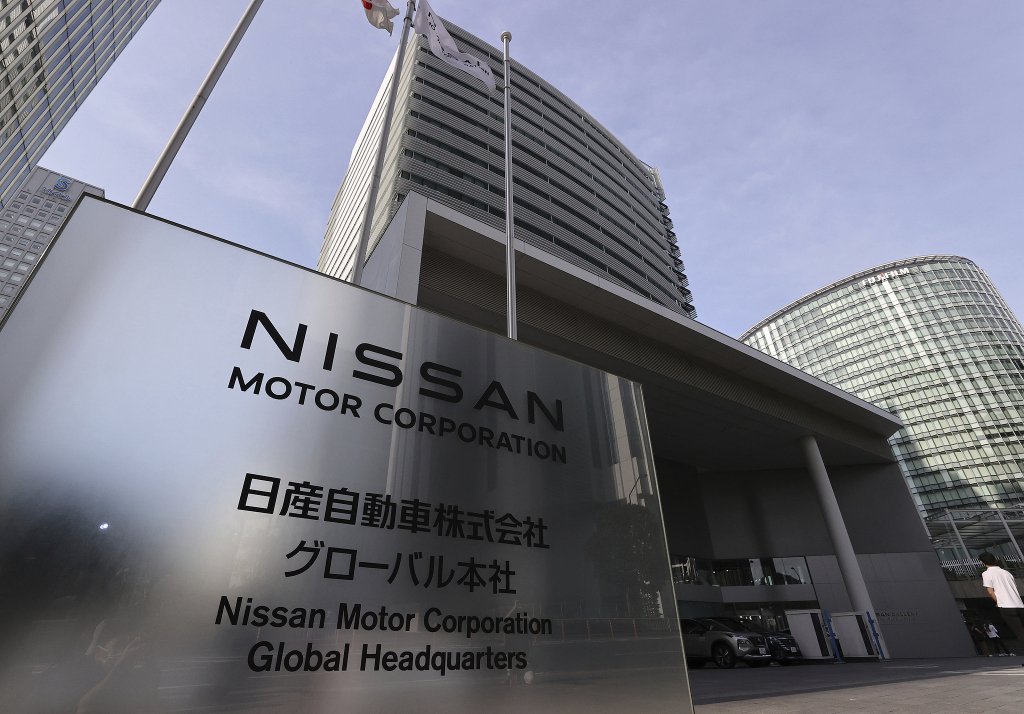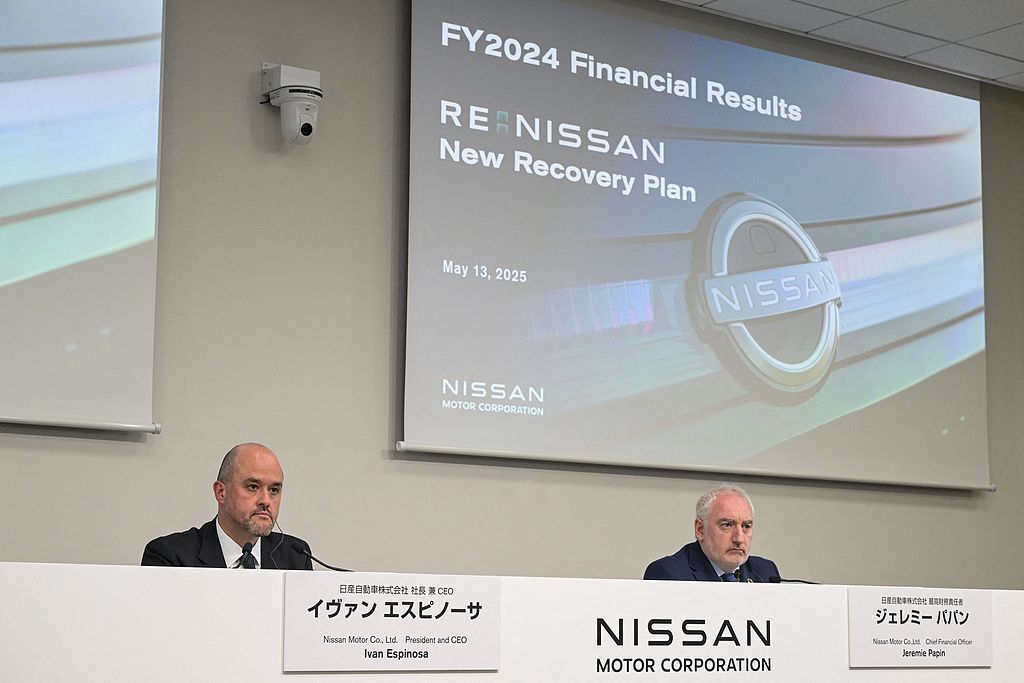Nissan faces a well-known crisis. The actual situation may be worse than expected. On May 13, 2025, Nissan announced its fiscal year 2024 results. The company will close seven factories worldwide. It will also lay off 20,000 employees.
Nissan reported a net loss of 670.9 billion yen for the fiscal year 2024. In the previous fiscal year, it posted a net profit of 426.6 billion yen. Revenue fell from 12.69 trillion yen to 12.63 trillion yen. Operating profit dropped from 568.7 billion yen to 69.8 billion yen. This marks Nissan’s third-largest annual loss, following the financial crisis in 2000 and the pandemic and chip crisis in 2020. In 2000, Nissan nearly went bankrupt and sought help from Renault. In fiscal year 2024, Nissan’s sales fell by 2.8% to 3.35 million units. It expects a further decline of 2.9% in fiscal year 2025, down to 3.25 million units. Nissan did not forecast profits for fiscal year 2025 due to uncertainties from U.S. tariff policies. “We have a mountain to climb,” said CEO Ivan Espinosa. He emphasized that the task requires discipline and teamwork. “Starting today, we will build the future for Nissan.” Espinosa called this performance a “wake-up call.” He is intensifying efforts to revive Nissan with a new plan called Re:Nissan. This is his first comprehensive plan since taking office. It includes an additional 11,000 job cuts on top of the previously announced 9,000. The plan also involves closing seven global assembly plants to turn around the struggling company. In March, former CEO Makoto Uchida resigned after stalled negotiations with Honda. Espinosa took over on April 1. Carlos Ghosn, former chairman of Renault-Nissan, shared his views on Nissan’s latest troubles in an interview with French media BFM Business. Ghosn fled Japan in 2019 and now lives in Lebanon. Ghosn stated that Nissan is in a “terrible predicament.” He predicted Nissan’s decline and the alliance’s demise long ago. While the latter has not yet occurred, Ghosn believes the split between Renault and Nissan is only a matter of time. He placed full blame on his successors. He thinks Nissan’s management and their “slow decision-making” are the root of the problems. He claimed that Nissan “had to seek help from one of its main competitors in Japan,” criticizing the failed merger talks with Honda. He reiterated his opposition to this idea, comparing it to the “alliance between Renault and Peugeot” and added, “It makes no sense.” Interestingly, during the earnings announcement that day, a reporter asked Espinosa if Nissan’s current situation is similar to when Ghosn took charge in 2001. Espinosa replied that times have changed. The challenges now are much more severe than those Ghosn faced. Regarding partnerships, Espinosa expressed an open attitude. He does not rule out deepening cooperation with Honda. He is also considering other partners as long as they bring beneficial synergies, especially welcoming advanced technology companies. After a year of turmoil, Nissan is launching a major recovery plan to restore profitability by 2026. The “Revitalize Nissan” plan aims to save 500 billion yen. It divides costs into fixed and variable. The goal is to restore positive cash flow for Nissan’s business.
On May 13, 2025, local time, Nissan CEO Ivan Espinosa and CFO Jeremy Papin held a press conference at the company’s headquarters in Yokohama, Kanagawa Prefecture, Japan. Nissan is pausing several projects after 2026 regarding variable costs. By fiscal year 2027, Nissan will abandon the Kyushu battery plant project. Its industrial footprint will shrink from 17 to 10 sites. Before fiscal year 2027, Nissan will cut 20,000 jobs from a global total of 133,000. This represents about 15% of its workforce, including the previously announced 9,000 positions. All departments will face layoffs, impacting production, sales, management, and R&D roles, both direct and contract. In R&D, Nissan aims to reduce average hourly costs by 20% and decrease component complexity. Vehicle development will accelerate, shortening cycles to 30-37 months. The goal is to lower component complexity by 70% and reduce platform numbers from 13 to 7 by 2035. The revitalization plan also includes regional adjustments. Nissan will focus on six key areas: the U.S., Japan, China, Europe, the Middle East, and Mexico. It will enhance localized products, especially in electrification and compact SUVs. Alliances with Renault, Mitsubishi, and Honda will play a core role. Nissan’s strategy in China will emphasize increasing the localization of new energy vehicles. Additionally, exports of localized products will help meet diverse global demands. Espinosa stated that these new plans followed a careful assessment of Nissan’s operations. The aim is to align production with demand, including market and product strategies. Nissan hopes to consolidate its global automotive production bases from 17 to 10 by fiscal year 2027. This figure exceeds the previous target by four plants. Nissan has not disclosed which factories will close but has not ruled out Japan. Espinosa mentioned that closing factories will be a global action, including those in Japan. “This is a very painful and sad decision. We wouldn’t do this if it weren’t for Nissan’s survival,” he emphasized. These measures aim to adjust the company’s scale. They target a global production capacity of about 2.5 to 3 million vehicles by fiscal year 2027. Forty-six-year-old Espinosa is Nissan’s youngest CEO. He faces many challenges. He must cut global capacity, revive sluggish sales, update aging product lines, reduce billions in fixed and variable costs, pay down massive debt, restore the company’s credit rating above junk status, and eliminate record deficits. Nissan must also revive its technical partnership with Honda. In February, its merger plan with rival Honda failed. Espinosa had considered these issues before the Trump administration imposed a 25% tariff on U.S. auto imports and parts, causing global trade turmoil. In February’s quarterly earnings announcement, Nissan proposed revival measures. Of the 9,000 layoffs announced earlier, 6,500 will occur in manufacturing, partly due to the closure of three plants. The first plant to close is in Thailand, starting in the first quarter of fiscal year 2025. The second will close between October and December. The third will close in fiscal year 2026. Nissan did not disclose the names of these plants. However, during the Q&A session on May 13, it revealed that among the seven plants to close, known locations include the ones in Mexico, Argentina, Thailand, and India. In 2024, Nissan will import about 115,000 vehicles from Japan to the U.S. Among them, 92,752 will be the Rogue, produced at the assembly center in Kyushu, Japan. Nissan seeks to mitigate tariff risks by shifting more Rogue production to the U.S.

